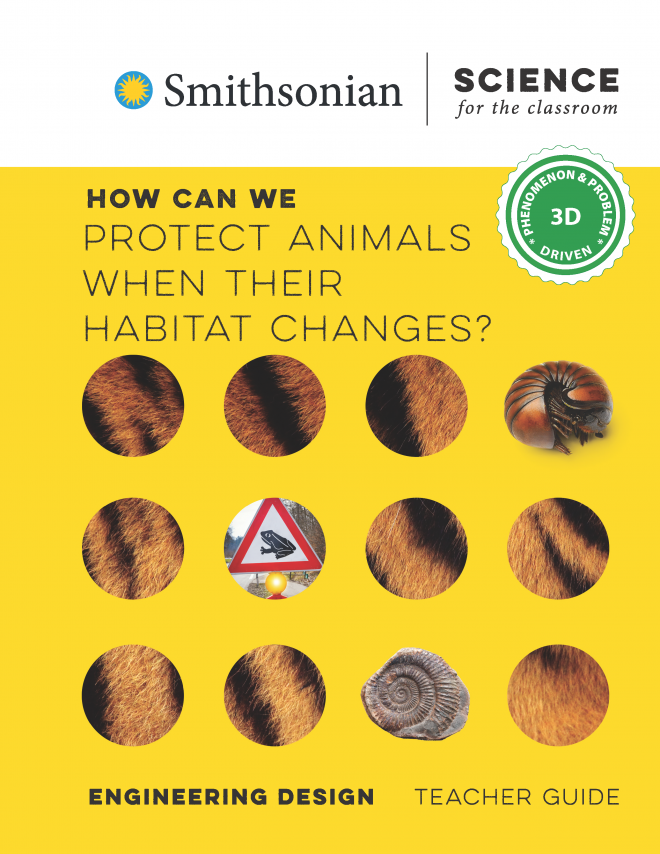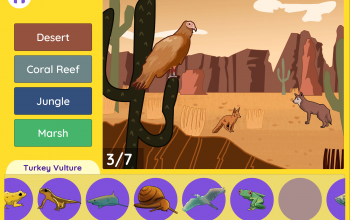How Can We Protect Animals When Their Habitat Changes?
How Can We Protect Animals When Their Habitat Changes?
How Can We Protect Animals When Their Habitat Changes? is part of Smithsonian Science for the Classroom, a curriculum series by the Smithsonian Science Education Center. It is designed to address a bundle of Grade 3 engineering and life science standards. In this module, students:
- Identify the problem of animal population decline caused by habitat change
- Design a classroom habitat where roly-polies can survive
- Use camera trap data to explain why different animals live in different habitats
- Compare fossils to modern organisms to explain that habitats on Earth have changed
- Use a model of a tiger habitat to explain why tiger populations have declined
- Design a salamander tunnel that will reduce the deaths of salamanders on roads
Below are digital resources that support teaching of this module.
The Age of Humans: Evolutionary Perspectives on the Anthropocene
This website has more information on the Anthropocene epoch.
https://humanorigins.si.edu/research/age-humans-evolutionary-perspectives-anthropocene
Family Letter
Before starting How Can We Protect Animals When Their Habitat Changes?, share the Family Letter with students’ caregivers. Indicate how they should submit responses to the letter.
Download the Family Letter PDF
Animal Needs (3:48)
This video shows animals eating, drinking, keeping cool, keeping warm, hiding, nesting, and feeding young.
Download the Animal Needs Video
Download the Accessible Version of the Animal Needs Video
Download the Transcript of the Animal Needs Video
Panda Enclosure
This file includes an image of a panda enclosure at the Smithsonian National Zoo.
Download the Panda Enclosure PDF
Mystery Object
This file shows an image of a trilobite fossil. Throughout Lessons 5 through 8 students will work to identify the fossil and figure out how it ended up in a desert.
Download the Mystery Object PDF
Modern Marine Organisms
This file includes a slideshow of selected marine organisms that can be found in oceans today.
Download Modern Marine Organisms PDF
Starlings in Flight (0:17)
This video shows a group of starling birds flying in a large group. Students will spend Lessons 9 and 10 figuring out why some animals move in groups like these birds.
Download the Starlings in Flight Video
Download the Accessible Version of the Starlings in Flight Video
Download the Starlings in Flight Transcript
Animals in Groups (1:59)
This video shows several different types of animals in groups.
Download the Animals in Groups Video
Download the Accessible Version of Animals in Groups Video
Download the Animals in Groups Transcript
Woodland Animals
This file shows 30 images taken by camera traps in northern Virginia.
Download the Woodland Animals PDF
Gorongosa National Park
This website is where participatory scientists can help scientists identify animals in Singita Grumeti Game Reserve, Tanzania.
https://www.zooniverse.org/projects/meredithspalmer/snapshot-grumeti/classify
Salamanders in Trouble
This slideshow introduces the engineering design challenge.
Download the Salamanders in Trouble PDF
Solution Models
This slideshow shows models of possible design solutions to the salamander problem.
Download the Solution Models PDF




Kit Tips & Tricks